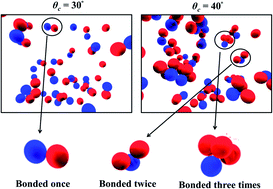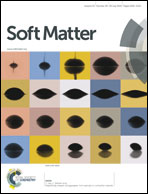Thermodynamic perturbation theory for self-assembling mixtures of divalent single patch colloids
Abstract
In this work we extend Wertheim's thermodynamic perturbation theory (TPT) to binary mixtures (species A and species B) of patchy colloids were each species has a single patch which can bond a maximum of twice (divalent). Colloids are treated as hard spheres with a directional conical association site. We restrict the system such that only patches between unlike species share attractions; meaning there are AB attractions but no AA or BB attractions. The theory is derived in Wertheim's two density formalism for one site associating fluids. Since the patches are doubly bondable, associated chains, of all chain lengths, as well as 4-mer rings consisting of two species A and two species B colloids are accounted for. With the restriction of only AB attractions, triatomic rings of doubly bonded colloids, which dominate in the corresponding pure component case, cannot form. The theory is shown to be in good agreement with Monte Carlo simulation data for the structure and thermodynamics of these patchy colloid mixtures as a function of temperature, density, patch size and composition. It is shown that 4-mer rings dominate at low temperature, inhibiting the polymerization of the mixture into long chains. Mixtures of this type have been recently synthesized by researchers. This work provides the first theory capable of accurately modeling these mixtures.


 Please wait while we load your content...
Please wait while we load your content...